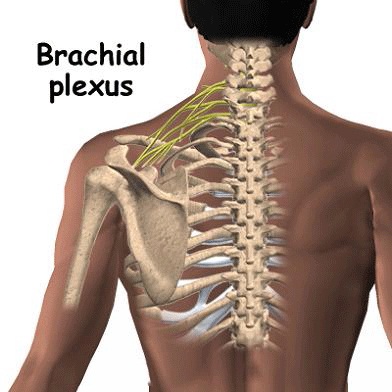BRACHIAL PLEXUS
ABOUT US
The brain exerts control on the upper limb via the spinal cord and, then, a grid of specialized structures (spinal nerves). There are five such nerves that exit the spinal cord on each side and emerge from the vertebral column into the neck. They intermingle in the neck (brachial plexus) and pass behind the clavicle (collarbone). Branches emerge from this grid at intervals to reach individual muscles of the upper limb. Control of each movement of the arm (shoulder, elbow, wrist and hand) depends upon the integrity and continuity of this system (peripheral nerves). These nerves are vulnerable to stretching during accidents. Vehicular accidents, particularly collisions and falls off two wheelers, involve sudden impacts on the neck and shoulder at high velocity (>30 km per hour is sufficient). The peculiar arrangement of the nerves in the neck makes them susceptible to being pulled in such accidents. This produces an immediate shutdown of their functions so that the victim’s arm is paralysed. The extent of the deficit depends upon the number of nerves affected. Thus, involvement of all five nerves results in complete loss of all movements from the shoulder the fingers. The patient cannot feel the limb (apart from the armpit and shoulder areas).
Did you know that!
Nerves can be internally damaged (or completely broken) without any visible external physical injury.
Nerve injuries inevitably produce paralyses of their functions
These functions quite often do not recover on their own.
Physiotherapy cannot restore damaged nerves.
Nerve reconstruction surgery offers the only hope of restoration of some of the lost functions in cases where spontaneous recovery does not occur.
Statistics of Brachial Plexus Surgeries
ADULTS

Insight to various surgical procedures performed in brachial plexus.

Detail information about brachial plexus to educate patients and their care givers.

Unlock to see various achivements in this field.
Know Your Consultant
Prominent Infrastructure :
-
Dedicated operation theatre and staff with high quality operating microscope;
-
3 Tesla MRI for evaluation of the brachial plexus prior to surgery.
Collaboration And Tie Ups :
-
Visiting fellows from Mexico and Egypt for training in brachial plexus surgery.
Research Projects :
-
Prospective study of direct repairs of roots for reconstruction in total brachial plexus palsies.
Contact Details
Department Of Abdominal Multi-Organ Transplantation
First Floor Super Speciality Building,
Deenanath Mangeshkar Hospital and Research Centre
Tel No- 020 - 49153110 Ext- 3110
Monday- Thursday (1pm - 3pm)